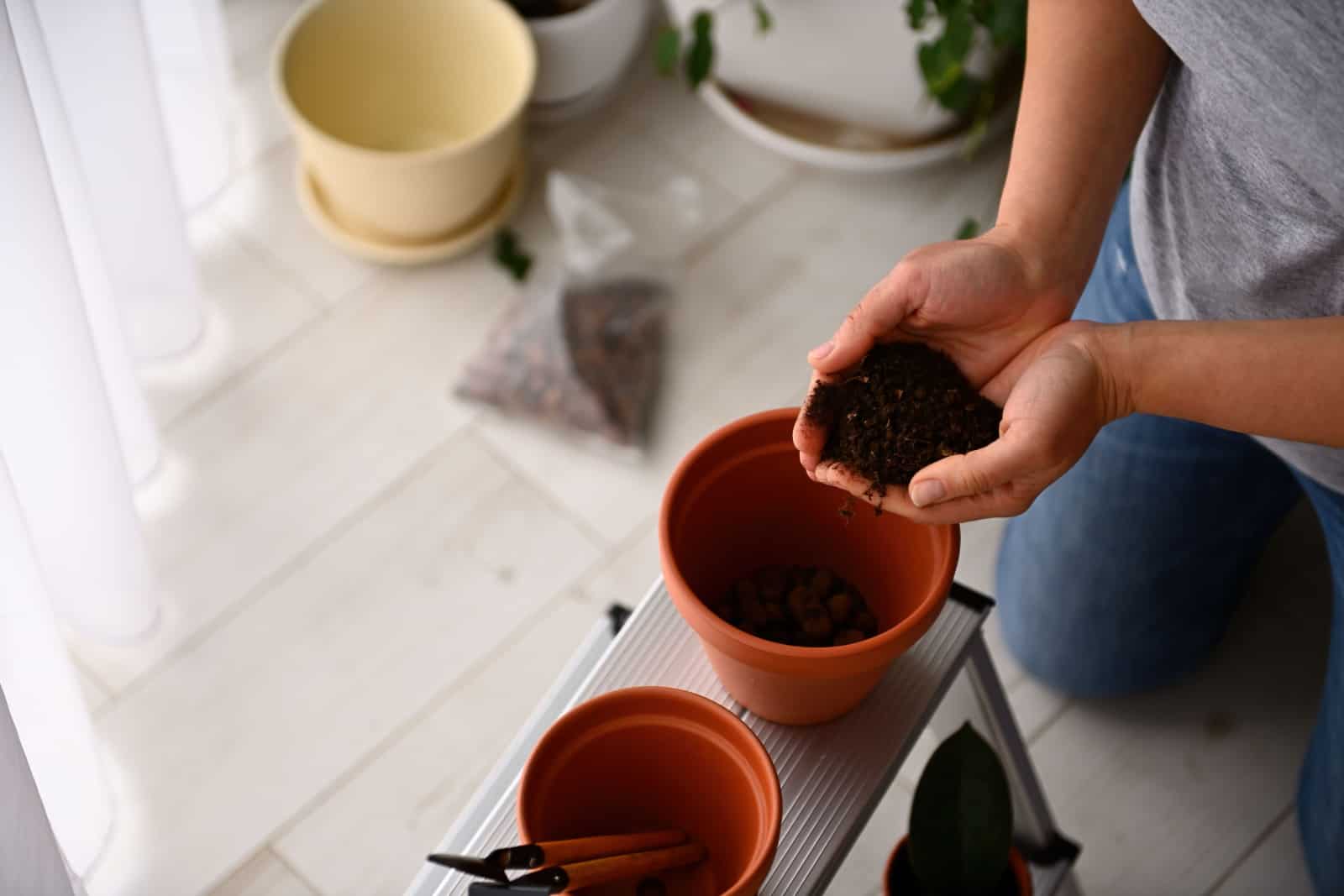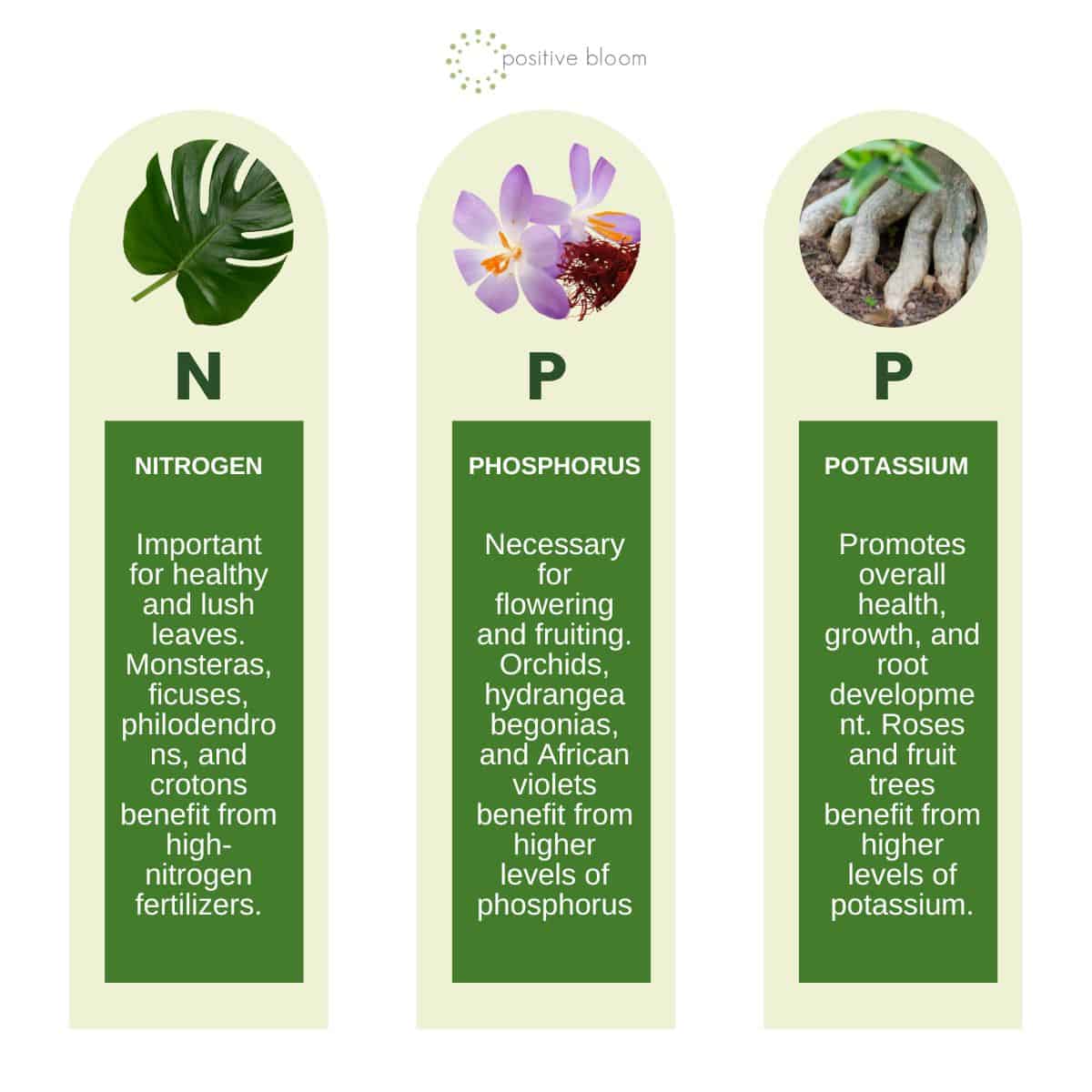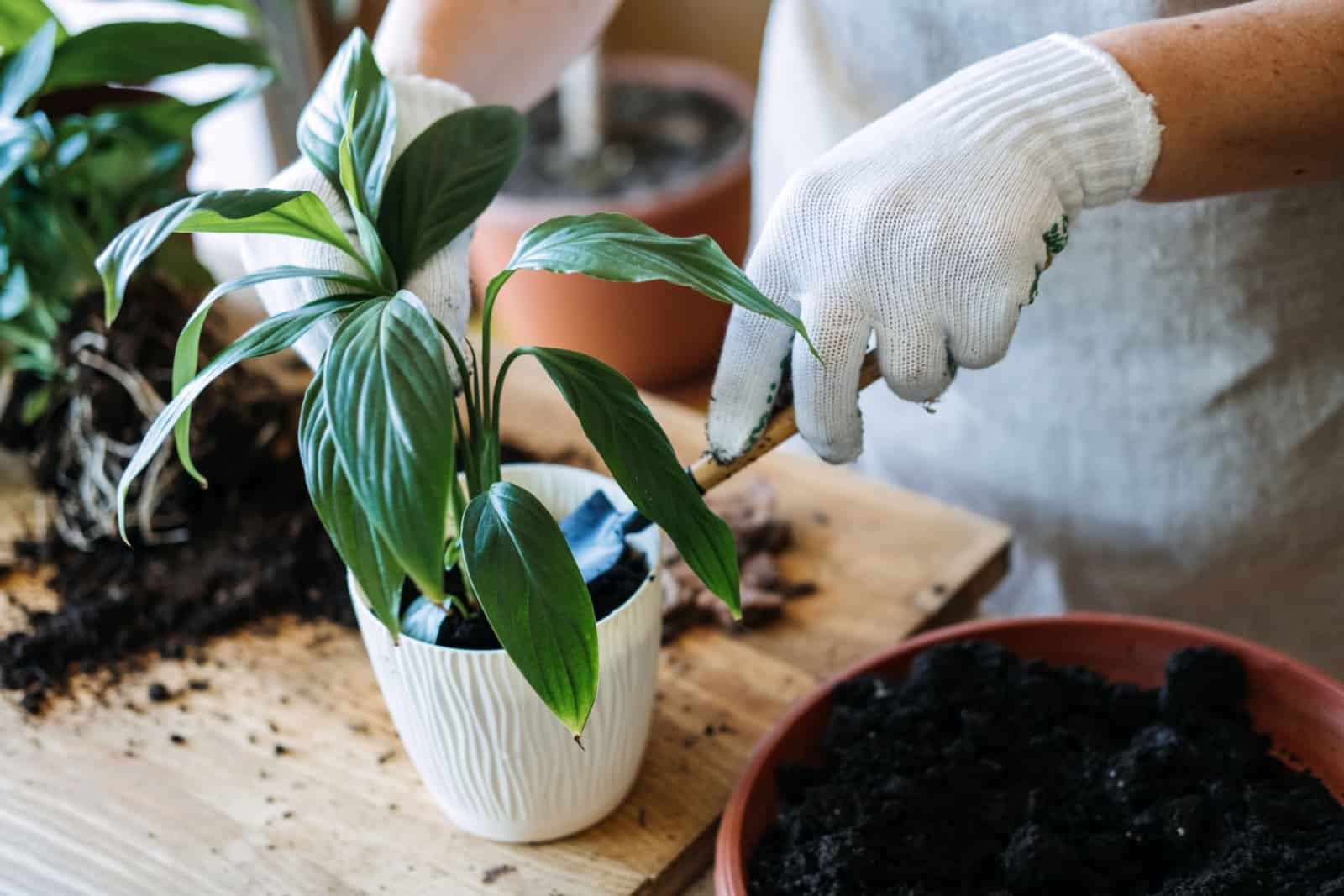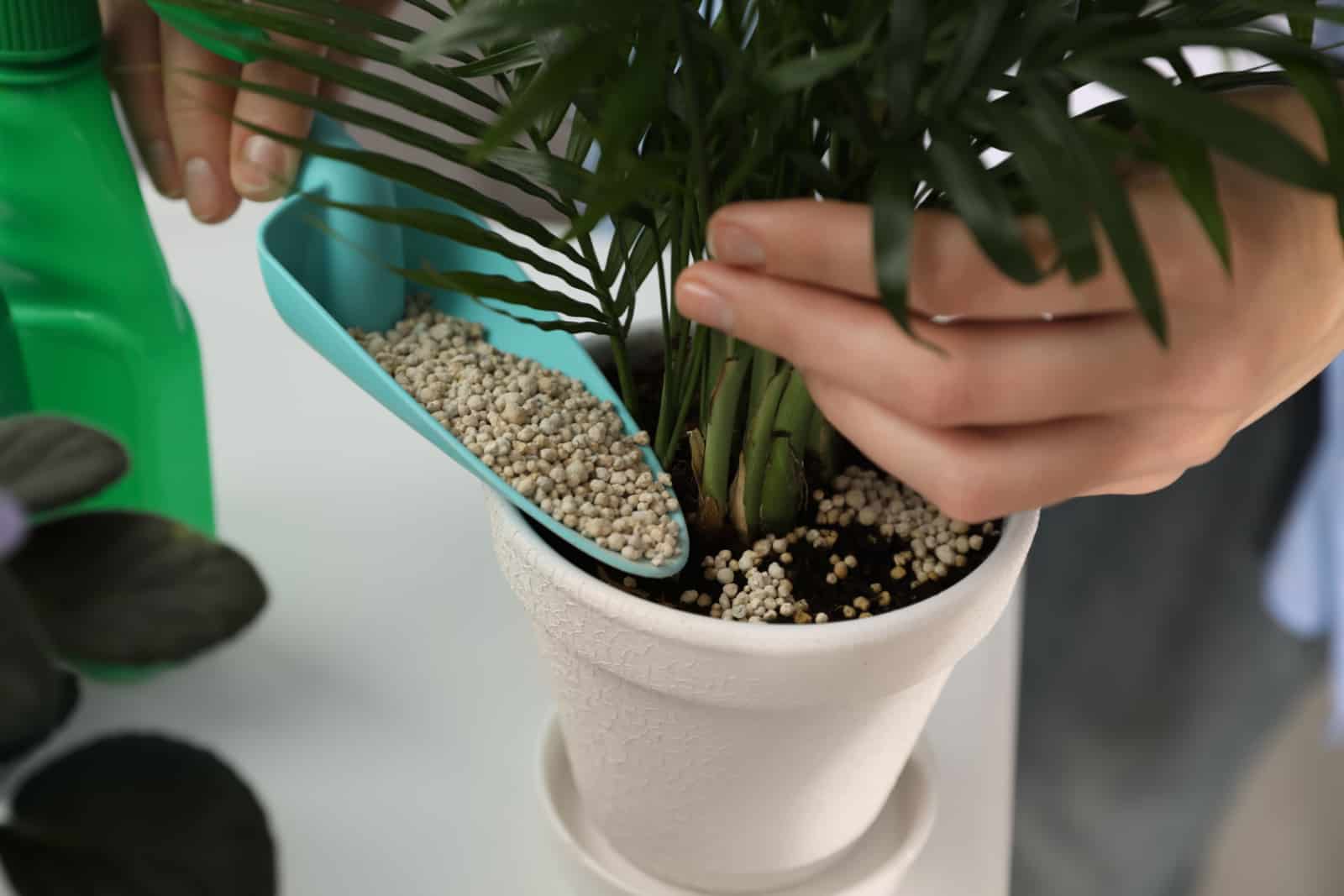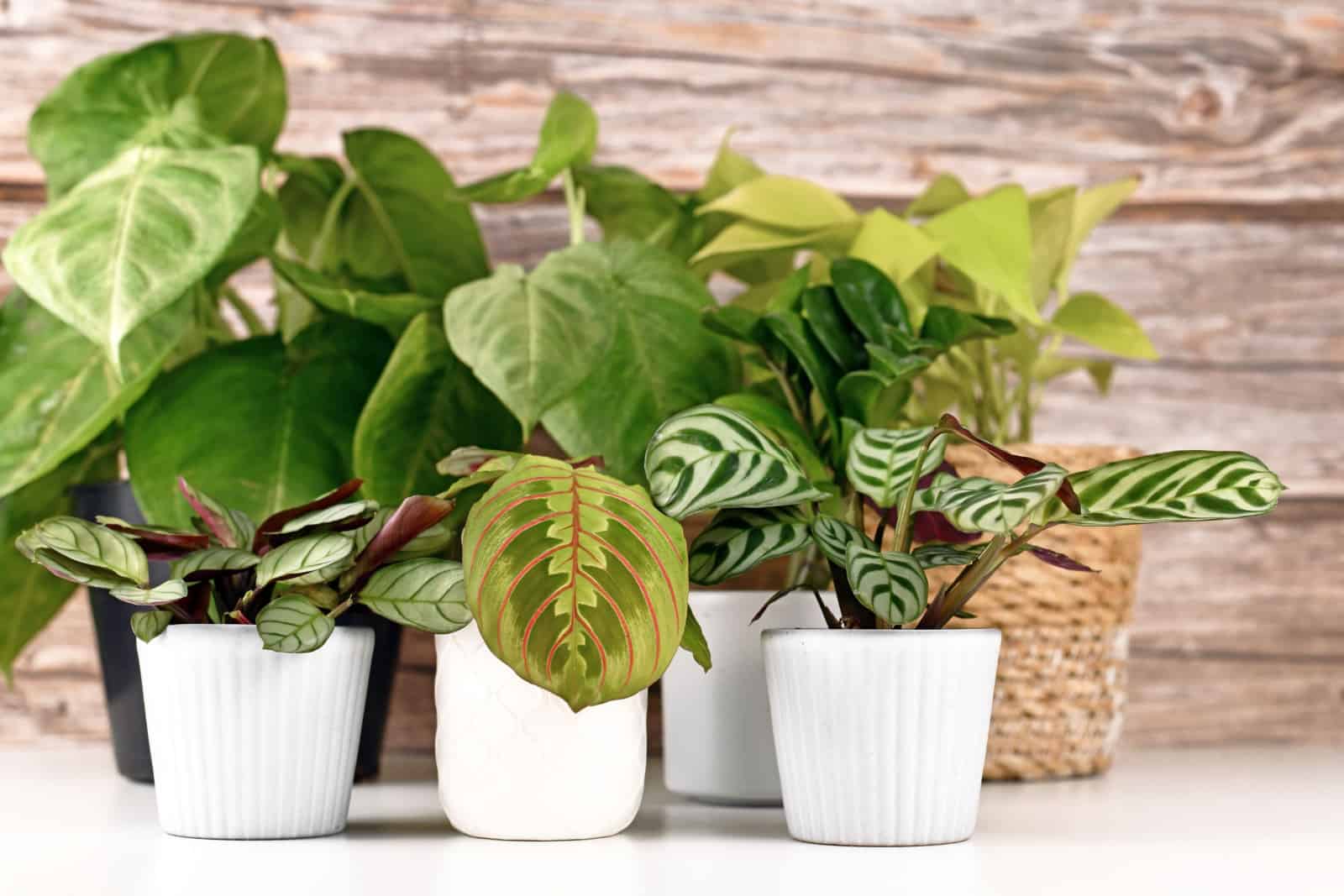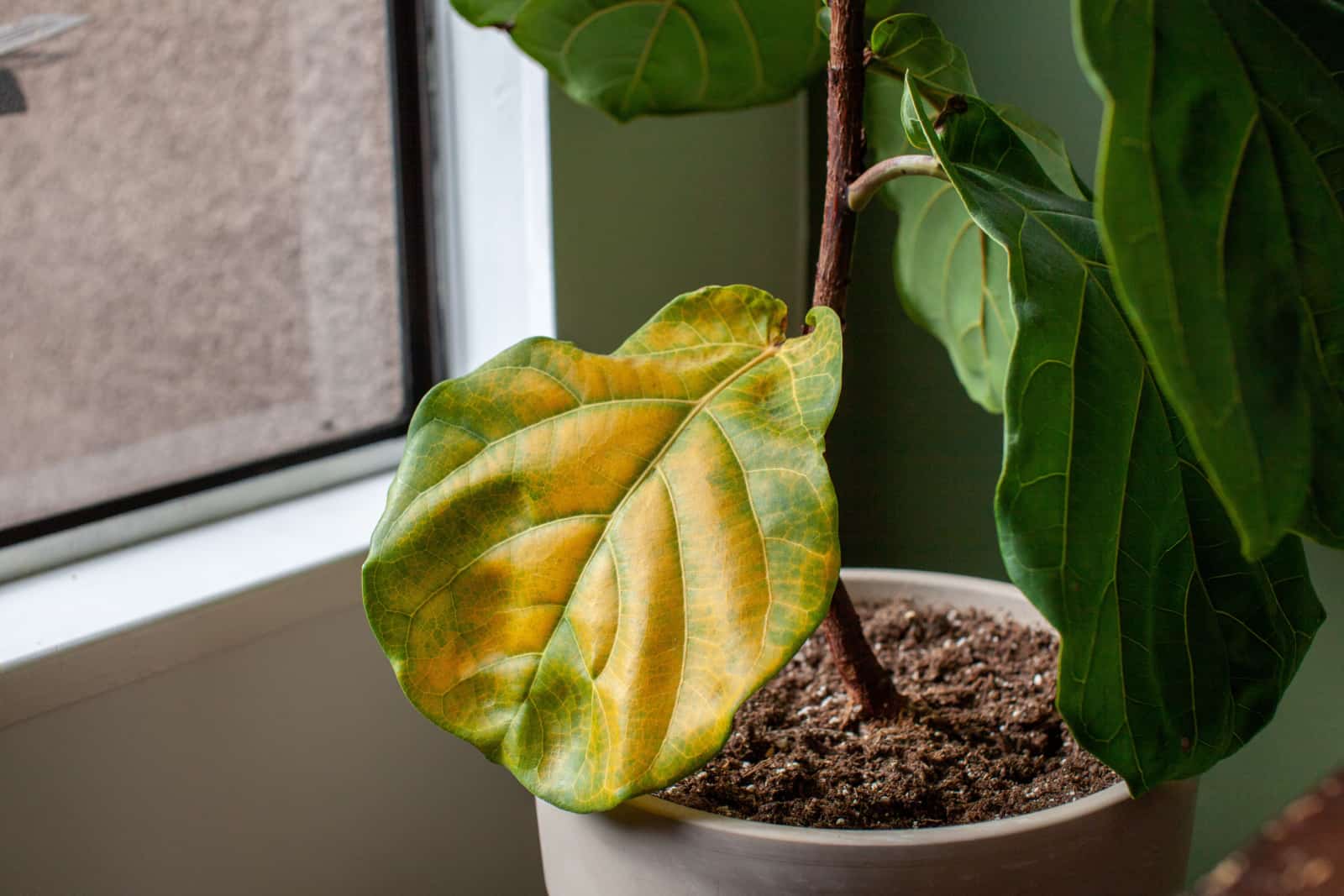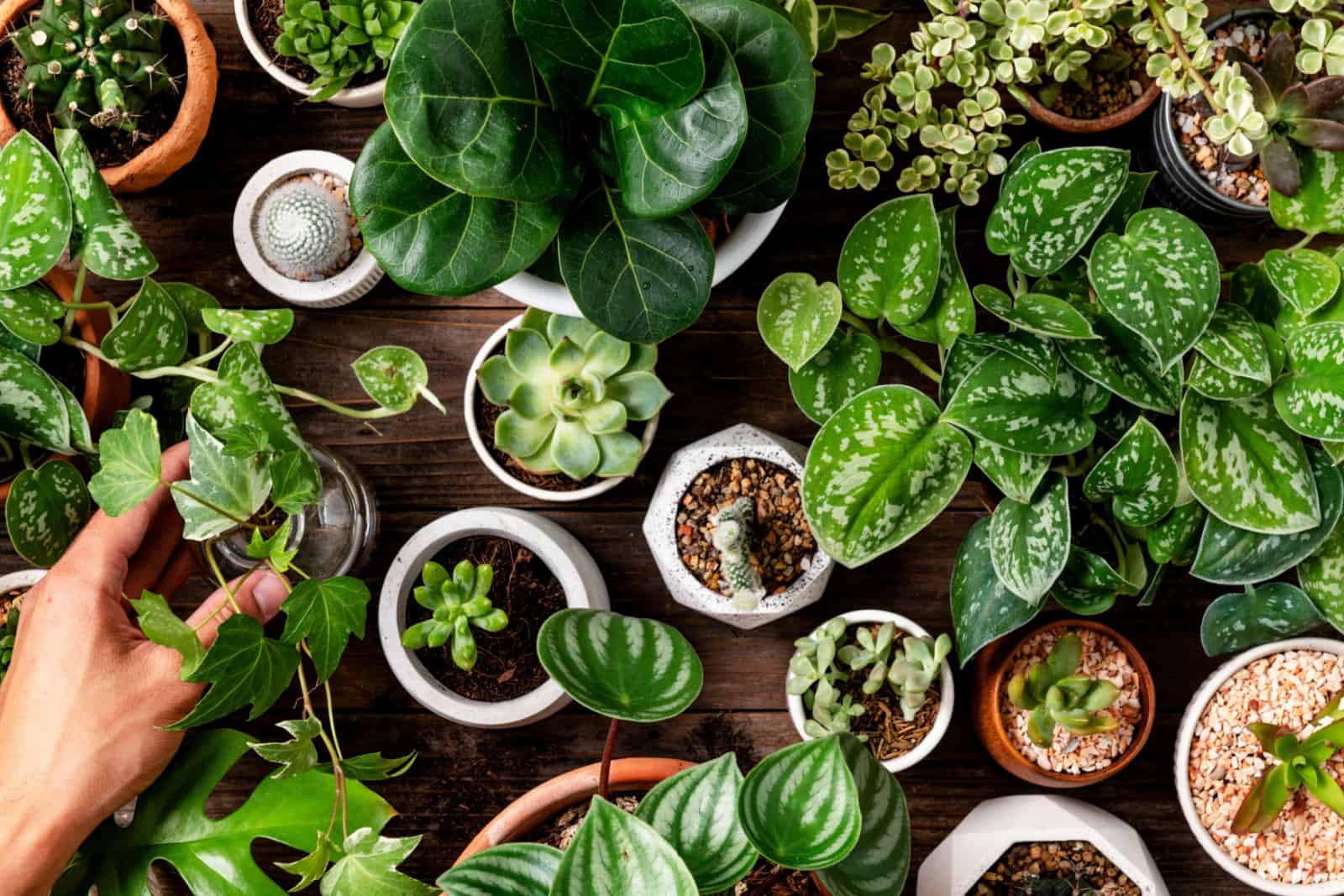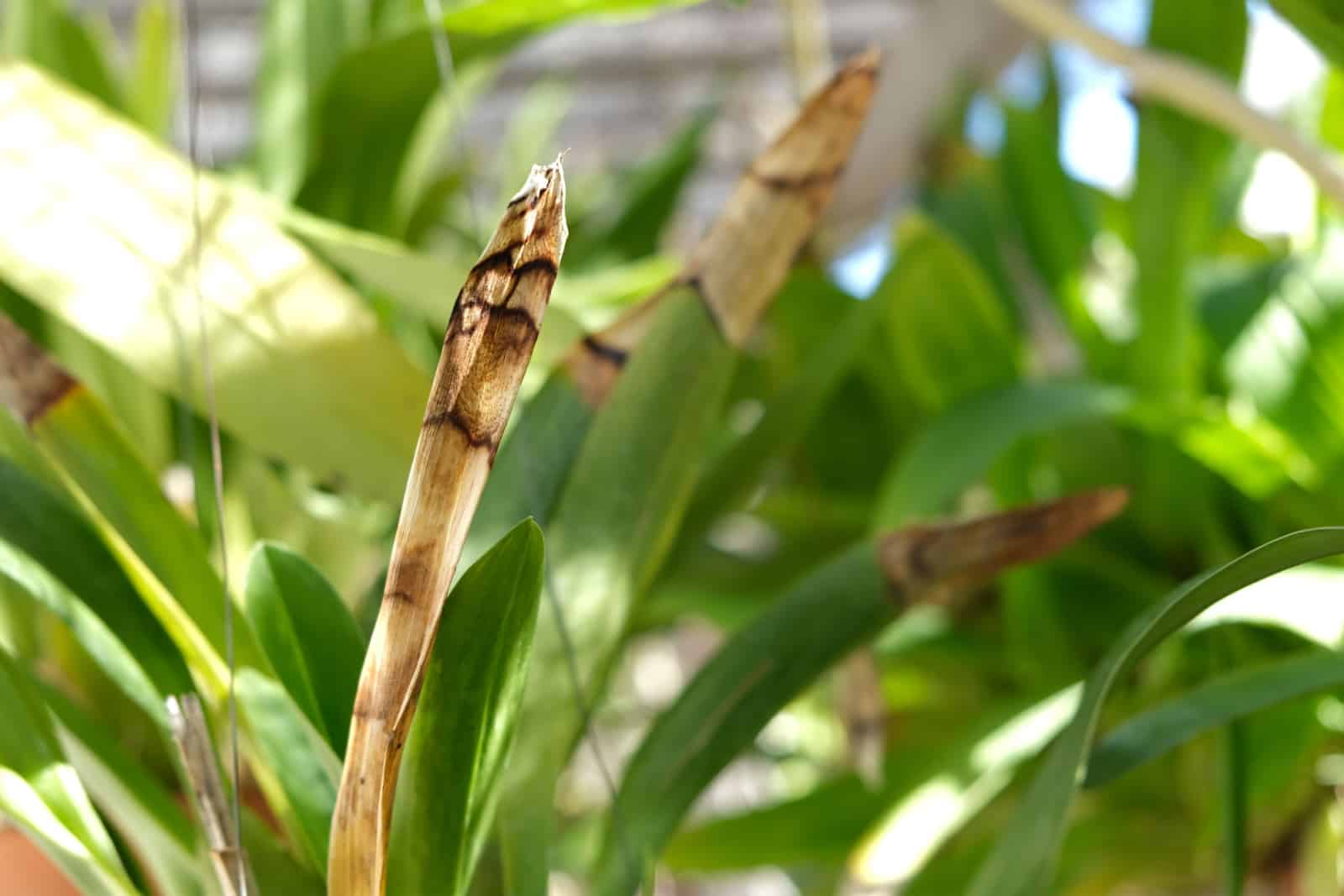Did you know that many plants don’t reach their full potential because they get fertilized inadequately? Too much or not enough fertilizer will leave your houseplants struggling.
Not all plants require additional nutrients, but if you want their growth rate to skyrocket, adding some pellets or fertilizer stakes to the soil should do the trick.
You will have to pay attention to when and how you feed your plants, but this extra “chore” is pretty simple once you get the hang of it.
Let’s check it out!
Why Fertilize Houseplants?
You don’t have to fertilize your indoor plants, but it will result in fast-growing, lush, and healthy houseplants.
Many people doubt this method because no one fertilizes monsteras in the wild. However, most houseplants come from the tropics and have organic matter such as leaves that decompose and enrich the soil in their natural environment.
That’s something that doesn’t happen in our living rooms, which is where our potted plants spend most of their lives.
You can help them thrive with a little boost from the three essential nutrients: nitrogen (N), phosphorus (P), and potassium (K). Most products use these three letters or just numbers, such as 10-10-10, to indicate the percentage of each element.
The good news is that most indoor plants react well to well-balanced fertilizers such as 2-2-2, 5-5-5, 10-10-10, etc. However, leafy plants do benefit from some extra nitrogen, so look for fertilizers specially designed for these varieties.
Here’s a quick breakdown of their importance:
Organic Or Synthetic Fertilizer
The first choice you have to make is whether to use organic or synthetic fertilizers. I personally prefer organic ones as they’re eco-friendly, I don’t have to worry about runoff, and they’re not so strong that they burn my plants’ roots if I accidentally overdo it.
They feed beneficial soil microbes and increase soil fertility over time, which is something synthetic fertilizers don’t promote. (1)
You can even make your own, such as banana peel fertilizer, but make sure to supplement it with other nutrients since this one mainly consists of potassium.
If you don’t want to play chemist, you can always get blood or bone meal, seaweed or fish fertilizer, manure, compost, rock minerals, etc.
These don’t contain high percentages of macronutrients like synthetic ones, so the results won’t be as quick or surprising. They do, however, contain micronutrients important for overall plant health.
On the other hand, I don’t want to demonize synthetic fertilizers. They work amazingly and contain micronutrients in addition to the main three. These fertilizers work fast, but you can get slow-release ones too if you prefer.
What I don’t like about them is salt build-up that can lead to overfertilization. It also leads to more work as you’ll have to replace the soil or flush it more frequently. Not to mention cleaning the pot of whitish build-up on the inner walls.
If you’re not sure whether you’re getting an organic fertilizer, just look for the OMRI certified label. It is a standard that ensures high quality and organic content.
How To Fertilize Houseplants
There isn’t one superior fertilization technique that works for all plants, but there are some rules that can ensure you’re doing it correctly.
They depend on the type of fertilizer you use, so here are some tips.
Liquid And Powder Fertilizers
You have to dilute these types in water according to the instructions before giving them to your plants, or the high concentration could burn their roots.
These are excellent for beginners as you can always dilute them some more if you’re worried about overfertilization. Once you and your plant get used to them, you can increase the concentration based on the manufacturer’s recommendation.
Water-soluble fertilizers release nutrients fast, so you’ll quickly see the results. And yes, you can get organic varieties!
You will have to apply them every 2-4 weeks, depending on the product.
Granules Or Pellets
These are slow-release fertilizers that take some time to work but last for months on end.
What I like about granules and pellets is that you just take a small amount, place them at the base of the plant, and water afterwards to activate them.
And if you apply too many granules, you can easily scoop them back into the bag (before watering, not when they’re wet).
They usually last for 3-6 months, depending on the product, and are a great option for those who dislike fertilizing.
Fertilizer Stakes
Fertilizer stakes are my personal favorite. Simply read the instructions and insert the recommended number of stakes.
They are slow-release and will feed your plants for 3-6 months before you have to reapply them, reducing your overall chores.
The disadvantage is that they may hurt the plant roots as they dissolve in one place, but this has never happened to me before.
You can move the stakes around the pot if you’d like to reduce this risk.
Foliar Spray
This fertilizer type has seen a boom in recent years as bromeliads and air plants have grown in popularity.
They’re incredibly easy to use as all you’ve got to do is spray them on the plants’ foliage and let them do their magic.
Foliar sprays aren’t that concentrated so as not to burn the leaves, but they work fast.
Make sure to apply them on both sides of the leaves. Just remember to use it as a boost, not a substitute for a healthy growing medium.
How Often To Feed Them
Start fertilizing your plants once you notice new growth. It gets simpler from there. Monitor your plants, keep track of fertilizing, and follow the instructions on the product.
For instance, you might have to use liquid fertilizers every 1-4 weeks, depending on how much you dilute them and which plants you use them for.
Granules, pellets, and stakes, on the other hand, can release nutrients for months, so don’t apply them too frequently.
Each product is different, so start by following the manufacturer’s instructions. If your gut tells you the technique is wrong, apply less and see how it affects your plants. It’s always better to add less than more as you won’t risk burning your plant’s roots.
Additionally, growing season, plant variety, light exposure, and even the size of the pot will determine how often you need to feed your plants.
For instance, the smaller the pot and the less potting soil in it, the less fertilizer you’ll have to use.
Light makes plants grow faster and if you want to support this growth, you can use a bit more fertilizer. Just make sure you don’t expose your plants to too much sunlight or they might get burned.
Finally, the type of plant will be the main determining factor. Succulents, cactuses, and air plants can get by with an annual feed, while foliage plants need much more nutrients.
Keep Track Of Fertilizing Your Houseplants
Keeping track of fertilizing your houseplants can be a nightmare if you have 80+. And that’s where plant journals prove useful.
You won’t have to remember every single fertilization, watering, repotting, and rotation this way; just write it down and check it to see when the next feed is.
You don’t have to use anything fancy; a blank calendar or a regular daily planner should do the trick.
Write down the fertilizing days, what type of product you use, the dosage, and the effects it has on your houseplants.
This technique will help you spot bad habits earlier and deal with them before they cause serious damage to your plants.
Signs Your Plants Need More Nutrients
You shouldn’t fertilize your plants randomly. Look for the signs and go from there.
One of the most common symptoms of under-fertilizing is lack of growth during the plant’s growing season, which is usually in spring and summer.
However, most tropical plants are dormant during late fall and the winter months, so lack of growth is what you should expect during that period.
Another sign that your plant needs more food is if its leaves start to turn yellow.
However, this symptom can signify many other things, such as overwatering and root rot, inadequate lighting, or even aging. Therefore, always check for the most common causes and go from there.
When Not To Feed Them
There are times when you need to fertilize your houseplants and there are times when you absolutely shouldn’t.
If fall is coming to an end and winter is approaching, your plant will naturally slow down its growth and no amount of fertilizer will speed it up. You would just burn your houseplant’s roots doing that. Therefore, avoid fertilizing plants in dormancy.
Also, don’t feed your plants if you’ve just bought them.
The nursery have likely fed or transplanted them into a nutrient-rich soil, so they don’t need additional food. They want the plants to look their best and are definitely giving them supplements to make it happen.
Another time I’d discourage fertilizing is immediately after repotting.
Most ready-made potting soils already contain plant food that can feed your plants for up to six months, depending on the product. Adding more fertilizers would just put your plant in danger of overfertilization.
Finally, don’t feed your plant if you notice signs of stress, shock, or illness.
When we notice that our plant isn’t thriving during its growing season, we tend to think of fertilizers as magic cures that will make all the bad things go away.
But if your houseplant is overwatered or has suffered some kind of stress, the last thing it needs is more nutrients. Imagine it’s dealing with root rot and you give it minerals – it wouldn’t be able to absorb them! In fact, they might damage the roots even more.
What Happens If You Overfertilize Your Houseplants
It’s quite easy to overfertilize your plants, especially after seeing how good extra nutrients make it feel.
However, too much fertilizer can lead to leaf burns. It looks like a sunburn but it starts at the roots. When there are too many salts in the soil, either as a result of applying fertilizer too frequently or too much at once, they will draw moisture out of the roots.
This damages the roots, which cannot uptake water and nutrients properly, leading to symptoms similar to underwatering – burnt and crispy leaves browning from the top.
Other symptoms of overfertilization include stunted growth, leaf drop, and small foliage.
If you don’t flush or replace the soil, the excess salts may form a creamy white crust or powder on the pot rims, around the drainage holes, and even the soil.
This is a common sight on terracotta pots, but you can just wash it away, replace the soil, and your planter and plant will be off to a great start. After repotting, wait some time before resuming your fertilizer routine.
Finally, fertilizers can make your plant look leggy. They will cause a sudden spurt of vegetative growth but your plants won’t have a developed root system to support it. (2)
Of course, legginess usually indicates your plant isn’t getting enough sunlight, so always check for this before adding more nutrients; it’s much safer and easier.
Basically, fertilizing houseplants is excellent as long as you don’t over do it. Listen to your plants’ needs and gradually increase the amount of food you give them based on their growth rate.
Remember, smaller and dormant plants don’t need as much fertilizer as large actively growing ones.
References:
1. Pokorny, K. (2015). Here’s the Scoop on Chemical and Organic Fertilizers. OSU Extension Service.
2. Smith, K. (n.d.). The Perils of Over-Fertilizing Plants and Trees. UCCE El Dorado County Master Gardener.

